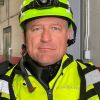By Dalan Zartman
Removing seats during an extrication can help to access, treat and package the patient. Ask these three questions to ensure seat removal is beneficial to the extrication process when your victims are trapped.
1. When is seat removal beneficial to the extrication process?
There is a long list of possible circumstances that make seat removal beneficial to extrication, including:
- Vehicle rollovers with roof intrusion onto the headrests
- C-spine management of a victim to maintain long axis removal from the vehicle
- Dash entrapment with limited access to dash displacement techniques
- Victims trapped in a back seat of a two-door vehicle
The goal of seat removal must always be to improve the victim’s situation; for treatment and packaging or to increase rescuer access to effectively manage and free the victim.
2. What do we know about the seats?
Are there any hazards or design features that we should be aware of? We need to understand seat design and be aware of the challenges we may face when manipulating or removing portions of the seat. Seats can be broken down into three basic assemblies:
- Head rest
- Seat back
- Seat base
The head rest can be removed to improve a victim’s airway position and C-spine management/access. There are no design hazards or challenges associated with the head rest. It typically has push-button configurations on the top of the seat that two metal bars travel through to adjust height of the headrest.
The seat back will often have a side impact air cushion, identifiable through labeling on the side of the seat. The air cushion can present a real hazard to rescuers and victims. An electrical wire traveling to the air cushion and will typically be shrouded in yellow coating. This wire should not be cut or it may discharge the air cushion. High pressure gas inflators may be present as well and should not be cut with tools or devices that will add pressure.
The hinge points on late model vehicles with side air cushions will be stronger and larger than those in older model vehicles. These can present reaction hazards when being cut with pressure style cutting tools.
Seat belt pre-tensioners may also be present near the hinge point on the seat back, on the seat base, or separate on the post or pillar. The same rule applies; avoid cutting wires or high pressure gas cylinders.
The seat base also has a track assembly and floor pan mounts that anchor it to the vehicle. Many of the track systems have spring returns and may move the seat to an undesirable forward position when tampered with or damaged.
3. What techniques and tools can we use?
Rescuers have a wide array of tools and techniques at their disposal. Before you choose your weapons and tactics, take the time to “skin” the seat back by cutting away the upholstery with a utility knife. This will allow you to inspect the assemblies, assess for hazards and choose the right approach.
Think like a minimalist and don’t over rescue. Always try before you pry and attempt to manipulate the seat with its designed operation before you start disassembling and removing. If the seat is controlled electrically, this may not be feasible, as the 12 volt battery supply should already be disconnected.
If you elect to cut the seat back away from the vehicle, be conscientious about tool placement and ensure that you are not placing the working parts of the tools in a position to harm the victim.
If you encounter a higher strength hinge assembly in a newer vehicle, simply make your cuts around the hinge. Be prepared for the seat to react to these cuts and control the seat movement as much as possible. In addition to hydraulic cutters and spreaders, you may use reciprocating saws, air chisels and mechanical tools to remove bolts.
Remember to let the victim’s needs drive your decision making, and select tools and techniques that are appropriate. In rare cases, the entire seat or seat base may have to be manipulated as well. This gets much trickier as access is more limited.
Hydraulic spreaders can displace the seat base or track assembly. These spreads can be made from the A post to push the seat towards the rear. They can also be made laterally to spread the seat base mounts off of the track. Use caution to expand the seat upwards and away from the floor pan with a victim sitting in the seat. Remember that these spreads ideally are designed to create inches, not feet, and allow access for a more controlled tool.
Finally, be very aware of the potential hazards associated with hybrid vehicles and batteries or high voltage components that may be located in the floor pan under or close to the seat. Puncturing or compromising these systems can result in high voltage exposure as well as potential thermal runaway events resulting in battery based fires that are hard to control.
Be systematic and methodical, and solve problems. Identify a viable reason to remove the seat, study the seat and choose the right tools and techniques.
Be safe and train hard.













